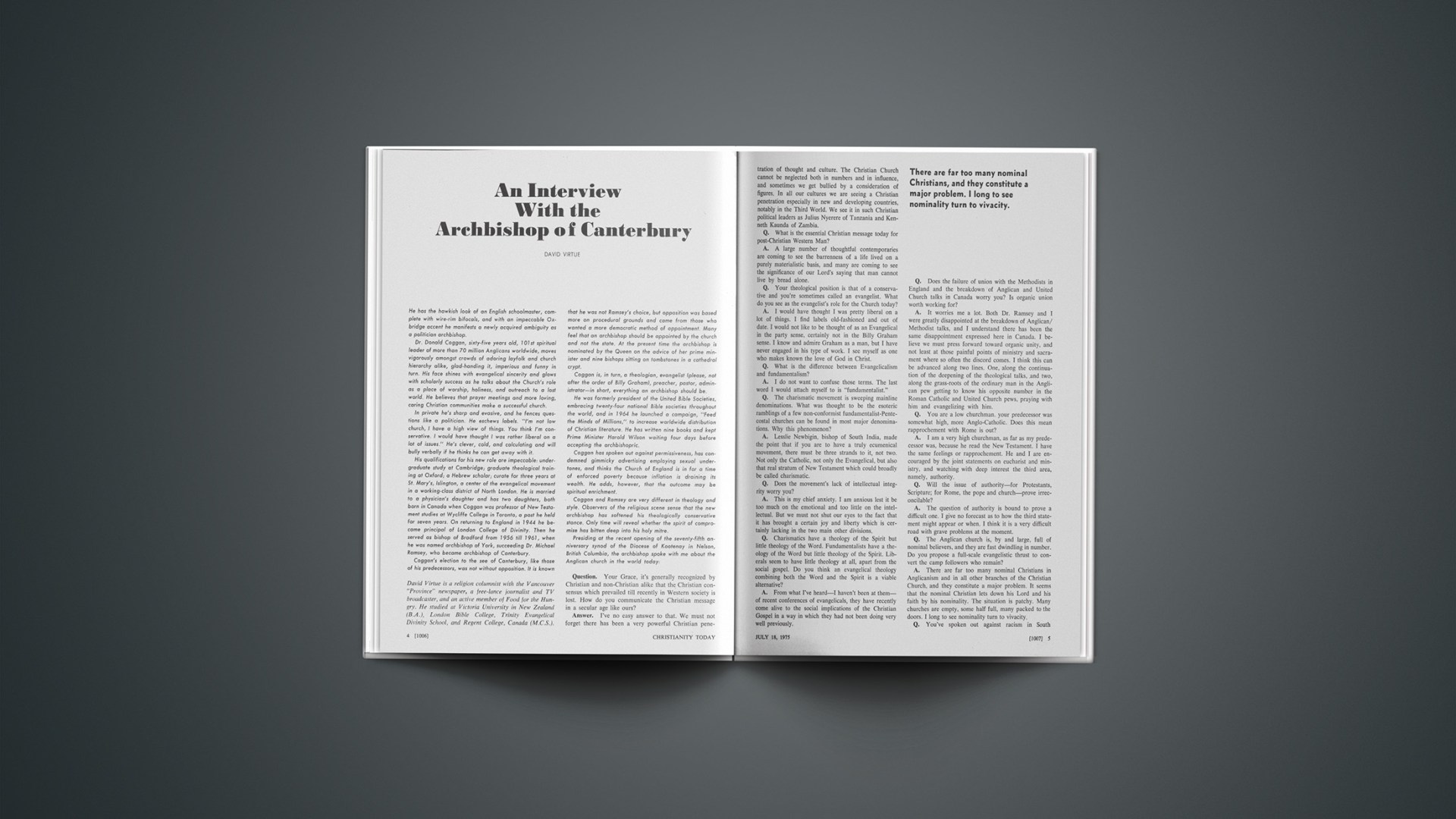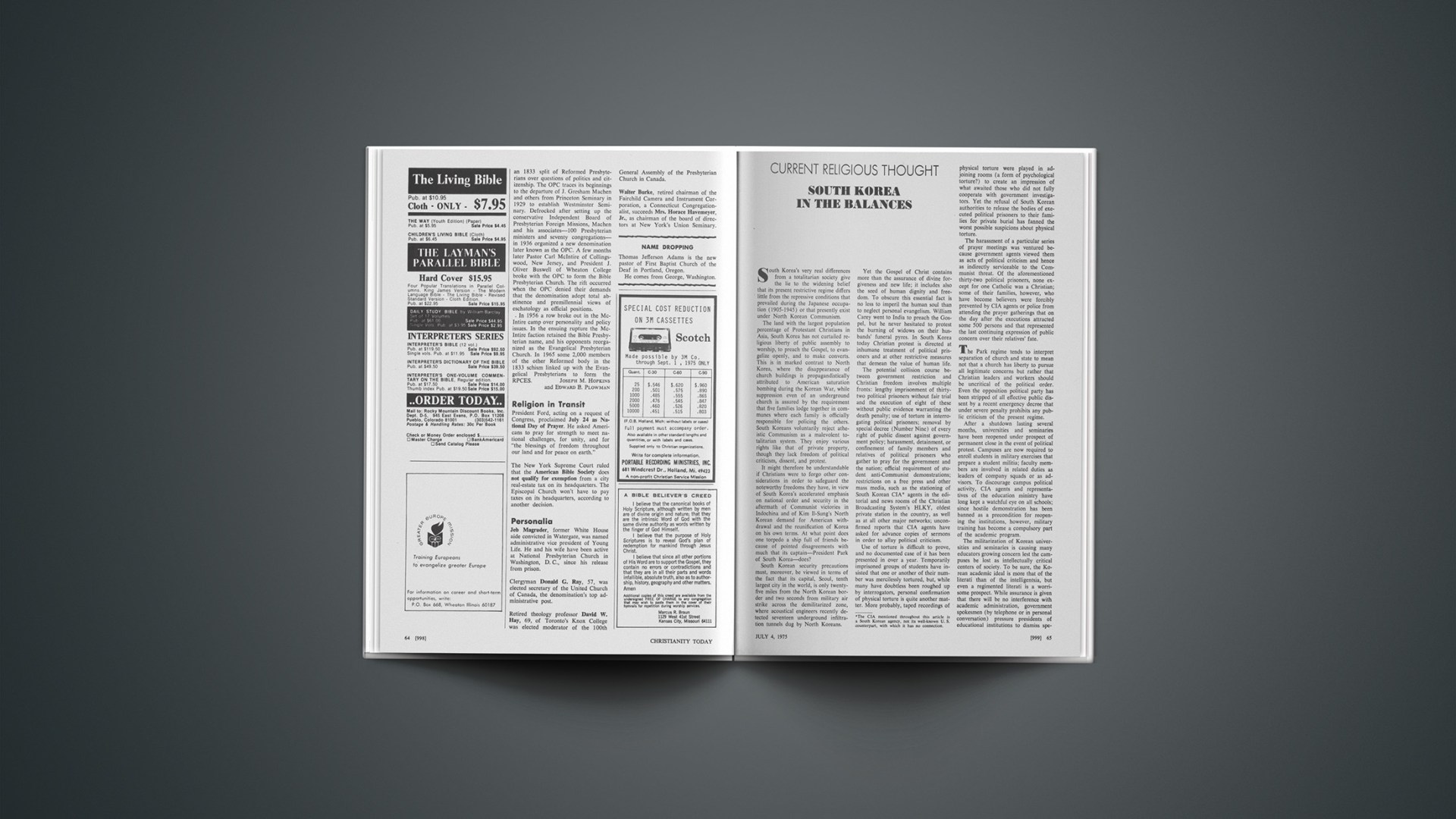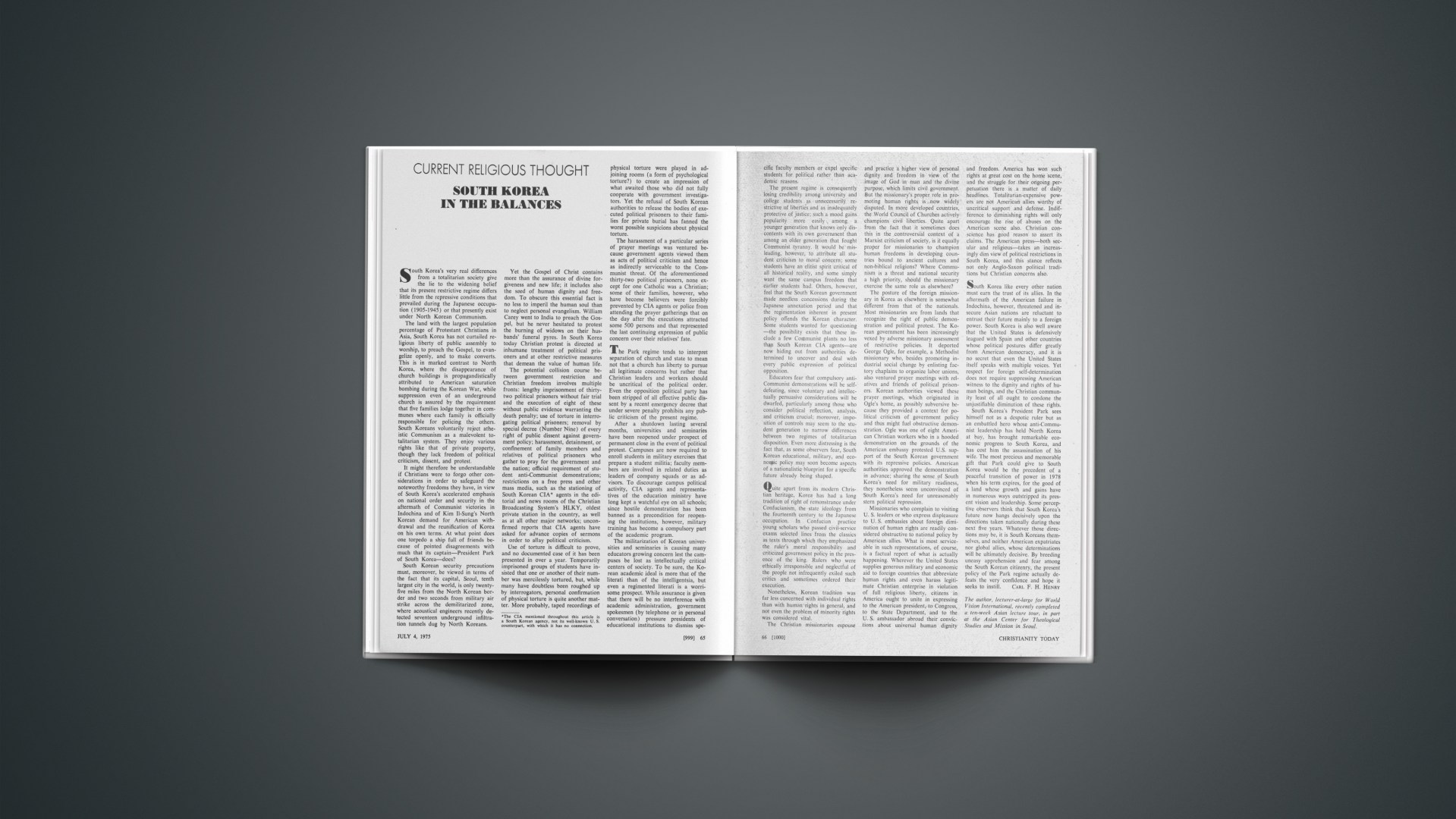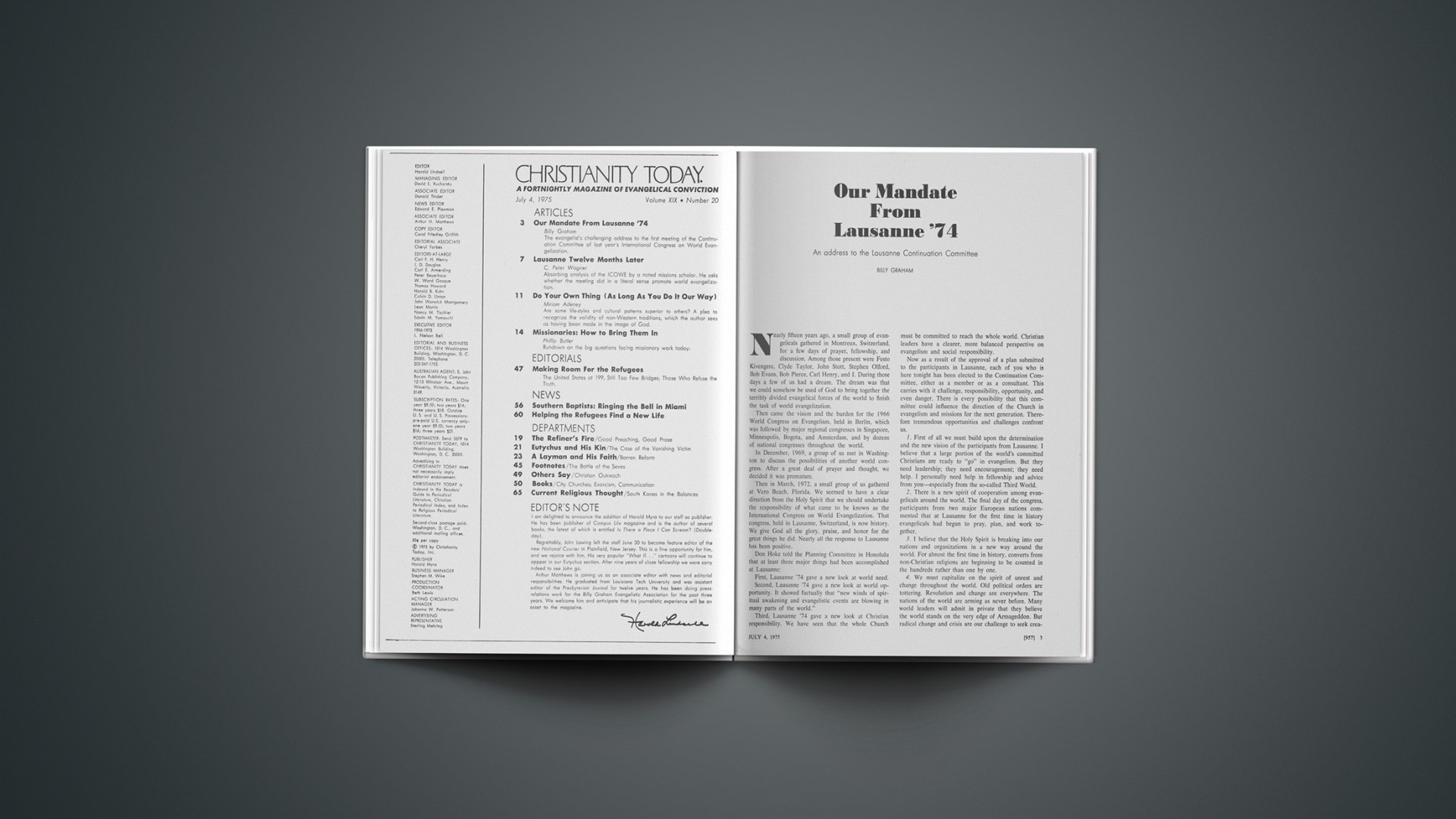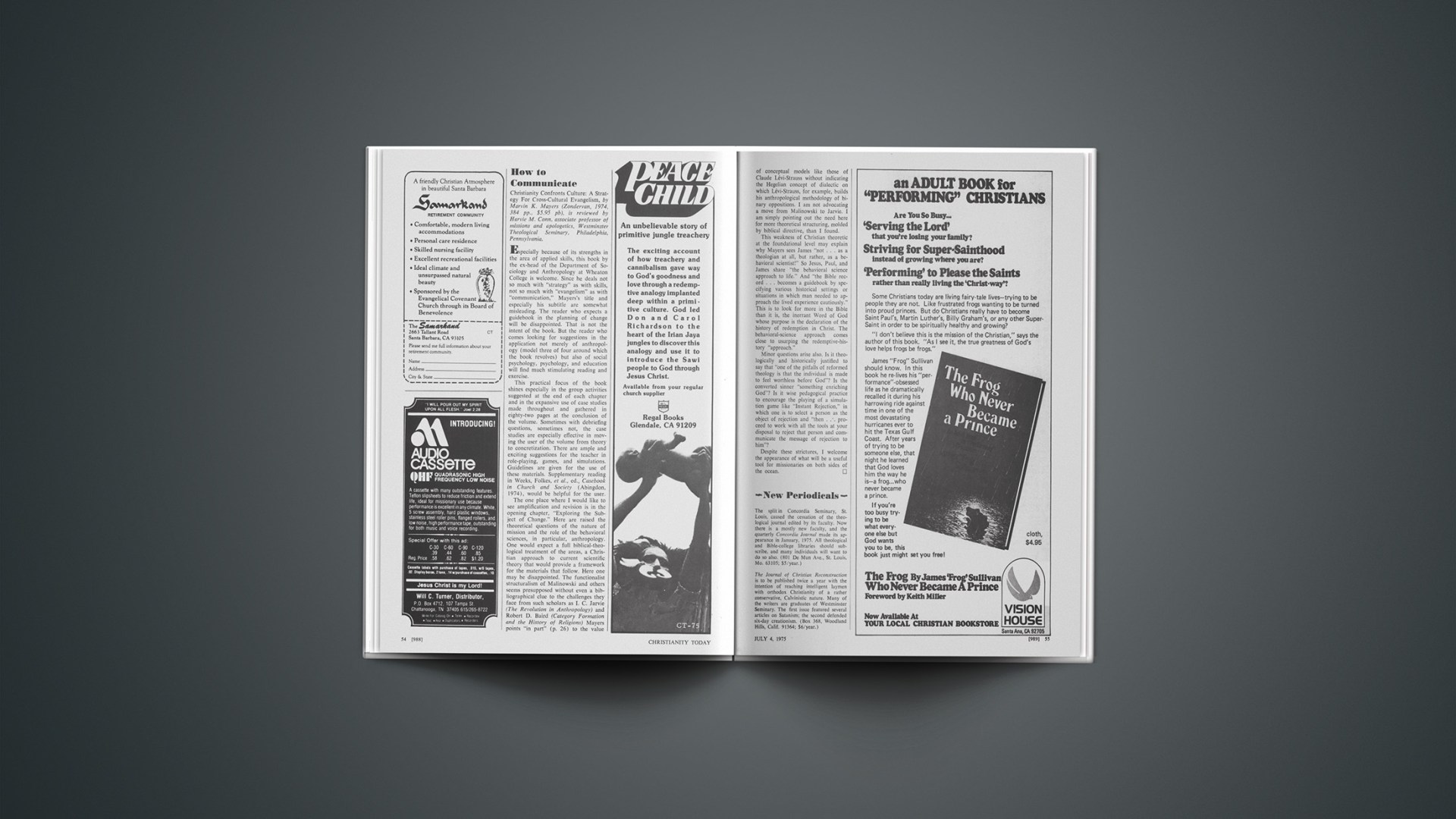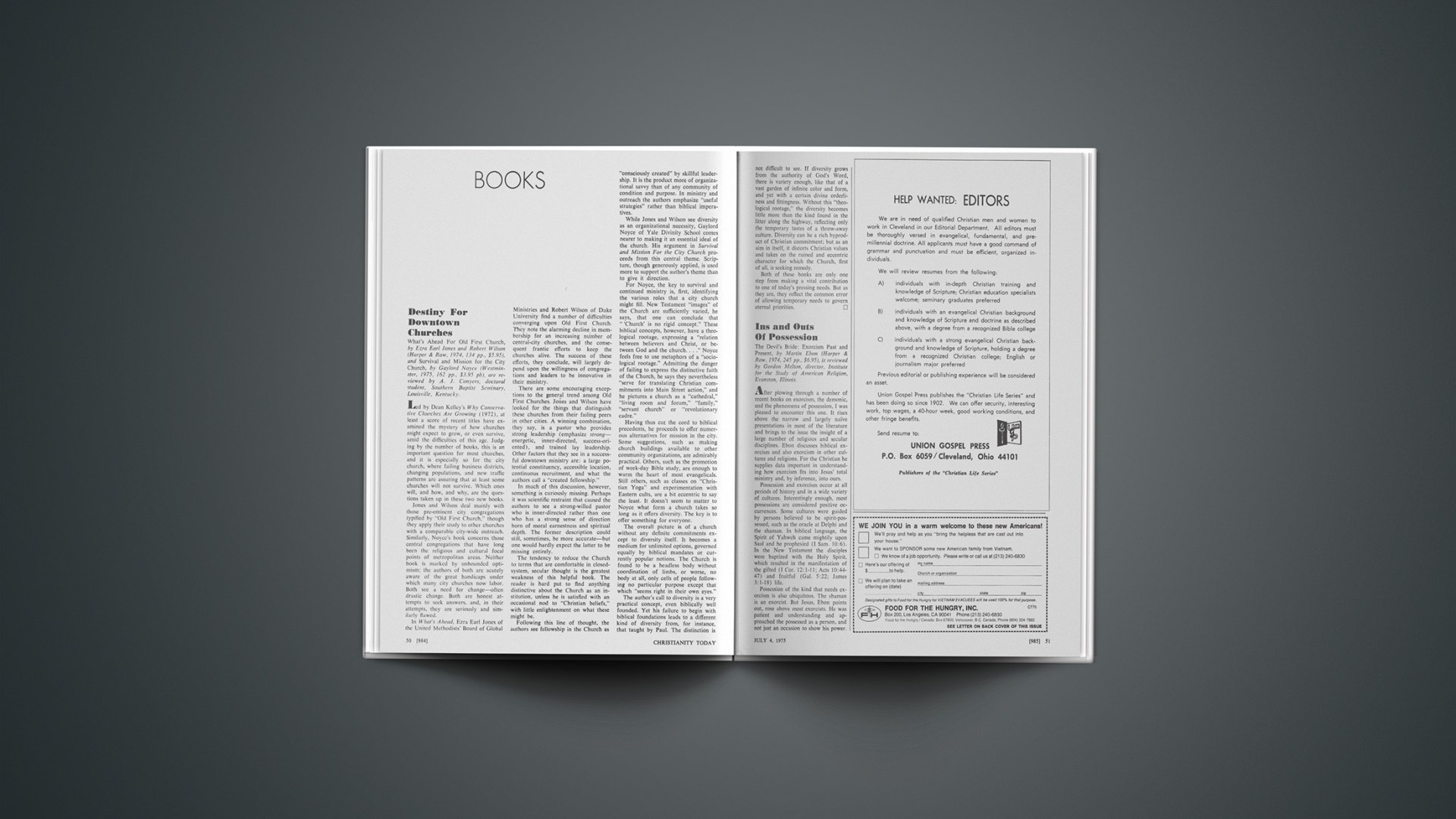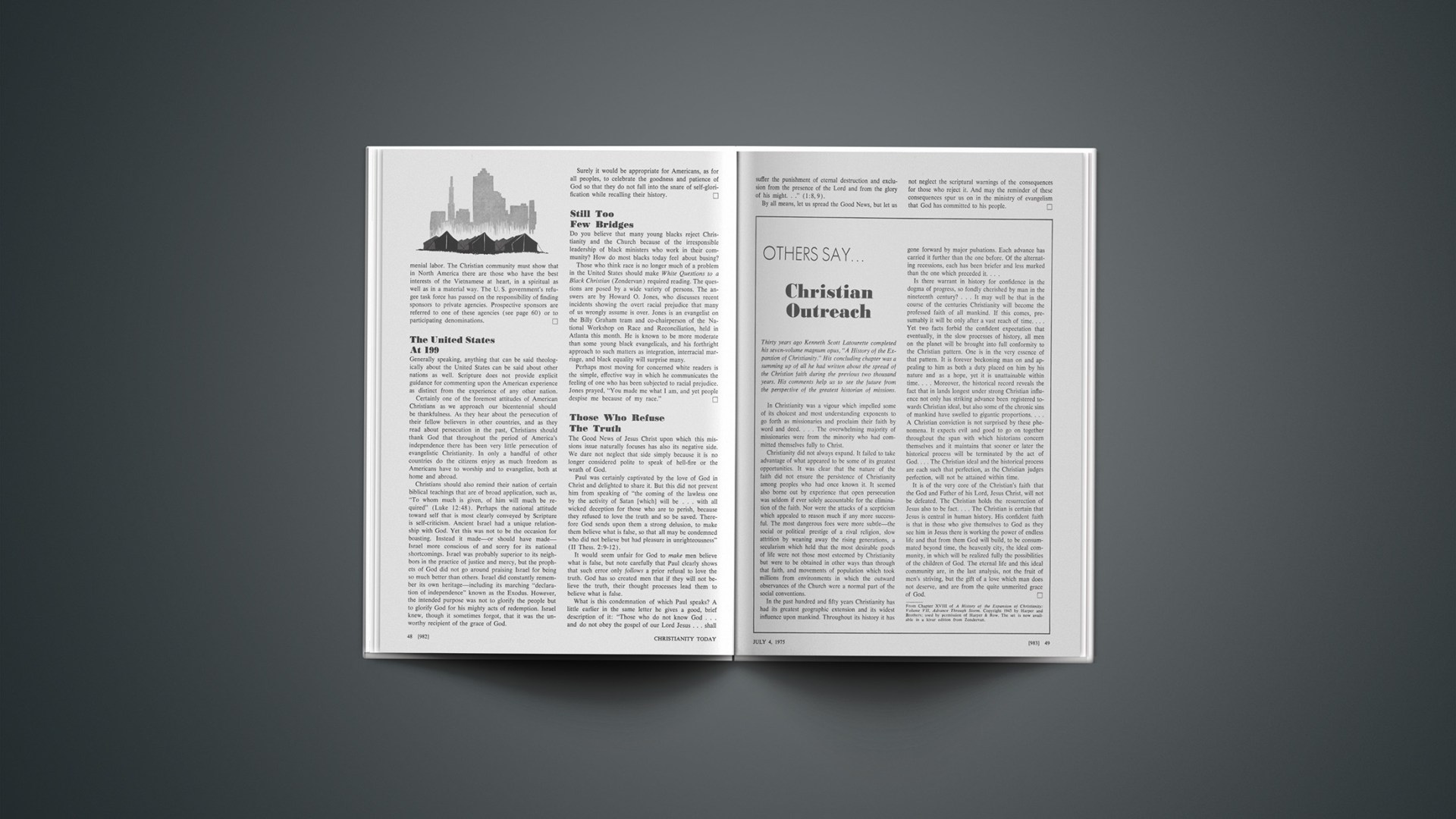He has the hawkish look of an English schoolmaster, complete with wire-rim bifocals, and with an impeccable Oxbridge accent he manifests a newly acquired ambiguity as a politician archbishop.
Dr. Donald Coggan, sixty-five years old, 101st spiritual leader of more than 70 million Anglicans worldwide, moves vigorously amongst crowds of adoring layfolk and church hierarchy alike, glad-handing it, imperious and funny in turn. His face shines with evangelical sincerity and glows with scholarly success as he talks about the Church’s role as a place of worship, holiness, and outreach to a lost world. He believes that prayer meetings and more loving, caring Christian communities make a successful church.
In private he’s sharp and evasive, and he fences questions like a politician. He eschews labels. “I’m not low church, I have a high view of things. You think I’m conservative. I would have thought I was rather liberal on a lot of issues.” He’s clever, cold, and calculating and will bully verbally if he thinks he can get away with it.
His qualifications for his new role are impeccable: undergraduate study at Cambridge; graduate theological training at Oxford; a Hebrew scholar; curate for three years at St. Mary’s, Islington, a center of the evangelical movement in a working-class district of North London. He is married to a physician’s daughter and has two daughters, both born in Canada when Coggan was professor of New Testament studies at Wycliffe College in Toronto, a post he held for seven years. On returning to England in 1944 he became principal of London College of Divinity. Then he served as bishop of Bradford from 1956 till 1961, when he was named archbishop of York, succeeding Dr. Michael Ramsey, who became archbishop of Canterbury.
Coggan’s election to the see of Canterbury, like those of his predecessors, was not without opposition. It is known that he was not Ramsey’s choice, but opposition was based more on procedural grounds and came from those who wanted a more democratic method of appointment. Many feel that an archbishop should be appointed by the church and not the state. At the present time the archbishop is nominated by the Queen on the advice of her prime minister and nine bishops sitting on tombstones in a cathedral crypt.
Coggan is, in turn, a theologian, evangelist (please, not after the order of Billy Graham), preacher, pastor, administrator—in short, everything an archbishop should be.
He was formerly president of the United Bible Societies, embracing twenty-four national Bible societies throughout the world, and in 1964 he launched a campaign, “Feed the Minds of Millions,” to increase worldwide distribution of Christian literature. He has written nine books and kept Prime Minister Harold Wilson waiting four days before accepting the archbishopric.
Coggan has spoken out against permissiveness, has condemned gimmicky advertising employing sexual undertones, and thinks the Church of England is in for a time of enforced poverty because inflation is draining its wealth. He adds, however, that the outcome may be spiritual enrichment.
Coggan and Ramsey are very different in theology and style. Observers of the religious scene sense that the new archbishop has softened his theologically conservative stance. Only time will reveal whether the spirit of compromise has bitten deep into his holy mitre.
Presiding at the recent opening of the seventy-fifth anniversary synod of the Diocese of Kootenay in Nelson, British Columbia, the archbishop spoke with me about the Anglican church in the world today:
Question. Your Grace, it’s generally recognized by Christian and non-Christian alike that the Christian consensus which prevailed till recently in Western society is lost. How do you communicate the Christian message in a secular age like ours?
Answer. I’ve no easy answer to that. We must not forget there has been a very powerful Christian penetration of thought and culture. The Christian Church cannot be neglected both in numbers and in influence, and sometimes we get bullied by a consideration of figures. In all our cultures we are seeing a Christian penetration especially in new and developing countries, notably in the Third World. We see it in such Christian political leaders as Julius Nyerere of Tanzania and Kenneth Kaunda of Zambia.
Q. What is the essential Christian message today for post-Christian Western Man?
A. A large number of thoughtful contemporaries are coming to see the barrenness of a life lived on a purely materialistic basis, and many are coming to see the significance of our Lord’s saying that man cannot live by bread alone.
Q. Your theological position is that of a conservative and you’re sometimes called an evangelist. What do you see as the evangelist’s role for the Church today?
A. I would have thought I was pretty liberal on a lot of things. I find labels old-fashioned and out of date. I would not like to be thought of as an Evangelical in the party sense, certainly not in the Billy Graham sense. I know and admire Graham as a man, but I have never engaged in his type of work. I see myself as one who makes known the love of God in Christ.
Q. What is the difference between Evangelicalism and fundamentalism?
A. I do not want to confuse those terms. The last word I would attach myself to is “fundamentalist.”
Q. The charismatic movement is sweeping mainline denominations. What was thought to be the esoteric ramblings of a few non-conformist fundamentalist-Pentecostal churches can be found in most major denominations. Why this phenomenon?
A. Lesslie Newbigin, bishop of South India, made the point that if you are to have a truly ecumenical movement, there must be three strands to it, not two. Not only the Catholic, not only the Evangelical, but also that real stratum of New Testament which could broadly be called charismatic.
Q. Does the movement’s lack of intellectual integrity worry you?
A. This is my chief anxiety. I am anxious lest it be too much on the emotional and too little on the intellectual. But we must not shut our eyes to the fact that it has brought a certain joy and liberty which is certainly lacking in the two main other divisions.
Q. Charismatics have a theology of the Spirit but little theology of the Word. Fundamentalists have a theology of the Word but little theology of the Spirit. Liberals seem to have little theology at all, apart from the social gospel. Do you think an evangelical theology combining both the Word and the Spirit is a viable alternative?
A. From what I’ve heard—I haven’t been at them—of recent conferences of evangelicals, they have recently come alive to the social implications of the Christian Gospel in a way in which they had not been doing very well previously.
Q. Does the failure of union with the Methodists in England and the breakdown of Anglican and United Church talks in Canada worry you? Is organic union worth working for?
A. It worries me a lot. Both Dr. Ramsey and I were greatly disappointed at the breakdown of Anglican/Methodist talks, and I understand there has been the same disappointment expressed here in Canada. I believe we must press forward toward organic unity, and not least at those painful points of ministry and sacrament where so often the discord comes. I think this can be advanced along two lines. One, along the continuation of the deepening of the theological talks, and two, along the grass-roots of the ordinary man in the Anglican pew getting to know his opposite number in the Roman Catholic and United Church pews, praying with him and evangelizing with him.
Q. You are a low churchman, your predecessor was somewhat high, more Anglo-Catholic. Does this mean rapprochement with Rome is out?
A. I am a very high churchman, as far as my predecessor was, because he read the New Testament. I have the same feelings or rapprochement. He and I are encouraged by the joint statements on eucharist and ministry, and watching with deep interest the third area, namely, authority.
Q. Will the issue of authority—for Protestants, Scripture; for Rome, the pope and church—prove irreconcilable?
A. The question of authority is bound to prove a difficult one. I give no forecast as to how the third statement might appear or when. I think it is a very difficult road with grave problems at the moment.
Q. The Anglican church is, by and large, full of nominal believers, and they are fast dwindling in number. Do you propose a full-scale evangelistic thrust to convert the camp followers who remain?
A. There are far too many nominal Christians in Anglicanism and in all other branches of the Christian Church, and they constitute a major problem. It seems that the nominal Christian lets down his Lord and his faith by his nominality. The situation is patchy. Many churches are empty, some half full, many packed to the doors. I long to see nominality turn to vivacity.
Q. You’ve spoken out against racism in South Africa, especially with respect to arms sales. Is your stance still as strong? Is apartheid contrary to the Gospel?
A. Yes, indeed, I’ve always said so. It’s damnable in many of its manifestations in South Africa. I do not think the right way to help to end it is to cut all one’s links with that country. We must keep the doors open. I don’t care for the doctrine of “holy hands off.”
Q. Is there a Christian solution to the Irish question? Many feel it’s Christianity which is the basis and cause of the conflict.
A. That’s an oversimplification. It’s primarily a political issue with a religious and historical undercurrent. There must be a political solution to it if it’s to be resolved but on Christian lines. It’s absurd to talk in Christian terms of a Roman Catholic who shoots a Protestant or vice versa; there is nothing more unchristian than that.
Q. What are your views on disestablishment? Is it possible?
A. I hope we shall not have disestablishment. There are other ways to a solution of our problems. The General Synod has made it quite clear that it wants the church to have a greater voice in the choice of its chief officers. I don’t think it’s past the wit of British man to find a way through short of a breach with the state.
Q. Is ordination of women to the priesthood inevitable?
A. My own belief is that it will come. My own personal view, is it should come. When I don’t know. And how, I don’t know. The theological and sociological questions already have been answered affirmatively. Anglicans should not fear a disruption of relations with the Roman Catholic Church as a result of going ahead with the ordination of women. Many Roman Catholics are seriously questioning the ban on women in the ministry, and some Roman Catholic priests in England want it to happen.
Q. Do you foresee a time when a woman might be archbishop?
A. The logical conclusion is, if women are ordained to the priesthood some will be consecrated to the episcopate.
Q. Malcolm Muggeridge sees Western civilization on a Gadarene course, hell-bent for dissolution and decay. Do you agree?
A. Yes, I do. I think the evidence is all around us.
Q. Is there a possibility that you might try to patch up relations with Malcolm Muggeridge? While he’s for Christianity, he’s against the Anglican church’s capitulation to the spirit of the age.
A. I have met him, enjoyed him, and I said to him once, “Mr. Muggeridge, I would very much like to take you on a tour and let you see what really is going on.” We had a good laugh, and that was the last time I met him.
Q. Do you see any conflict between the World Council of Churches and the recent Lausanne Congress on World Evangelization?
A. No comment.
Q. What is your opinion on the Lausanne Covenant?
A. I don’t know enough about it to comment.
Q. What is your opinion of the World Council of Churches’ giving money to support radical armed groups on the African continent?
A. It’s such a tiny percentage of their money given to this. I think the thing has been blown up far beyond what it deserves.
Q. What of the principle of the thing?
A. I have expressed the view and hold to it that I should like to see a pretty careful bit of work done on this and to find out how many in fact are the causes which use violence and that profit from WCC money and to see if it should not be withdrawn.
Q. Has the WCC effectively destroyed itself with respect to the biblical message of salvation?
A. I attended New Delhi and Uppsala, and looking back on Uppsala especially I tend to think that those who attended it were so oppressed by the appalling features of the Third World as to restrict their concern almost to this world and to think of salvation as too political. I hope that at Nairobi in 1975 the WCC will look to the dimensions of the biblical message.
Q. Could the Church as a power mediate in the Middle East crises?
A. Henry Kissinger has not been able to do it. I have to admire his efforts. The task of the Church, especially its laymen is to be mediators, reconcilers, wherever there is strife.
Q. Can the Church really be a bastion of strength in the modern world any more?
A. Not a bastion that holds back progress, but a source of strength. It’s not a haven for the frail, not a hospital for bits of broken humanity, but a battle-center, a training ground for the strong to fight against sin, ignorance, and disease.
Q. Do you see the role of the Church changing in the seventies?
A. There will be new directions, but it can never change its original purpose. The Church should be a place of worship, holiness, and outreach into the community.
Q. Are you going to retire at seventy?
A. I took office as a matter of fact before the seventy retirement age was accepted. I could go on according to the present law. Probably the incumbent of this particular office oughtn’t to go on much beyond that because of the sheer weight of the office.

